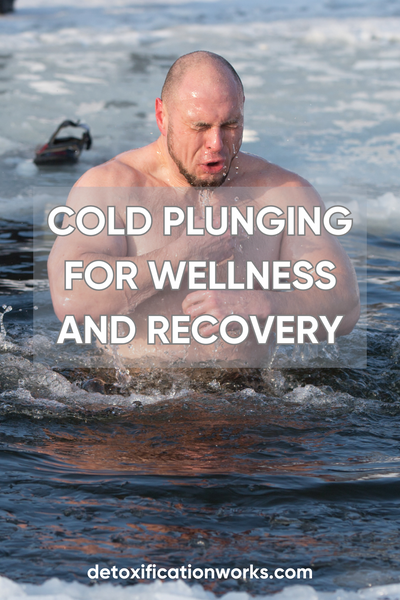
Embracing the Cold Plunge
Share
The Rising Wave of Cold Plunging for Wellness and Recovery
Cold plunging, an age-old practice now surging in popularity, is redefining the wellness landscape with its invigorating and health-promoting benefits. Rooted in the tradition of ice baths and frigid swims, cold water therapy is lauded not just for its ability to energize the body but also for its profound impact on physical recovery and mental clarity.

The Science Behind the Shiver
Diving into cold water might seem daunting, but the science-backed rewards justify the initial discomfort. When the body is exposed to cold temperatures, a cascade of physiological responses is triggered, designed to protect and invigorate the body.
-
Boosted Recovery: Athletes have long utilized cold plunges to accelerate recovery after intense workouts. The cold exposure helps reduce muscle inflammation and soreness by constricting blood vessels and decreasing metabolic activity (Source).
-
Enhanced Circulation: The cold shock initiates a natural process to preserve body heat, causing blood vessels to narrow (vasoconstriction) and then dilate (vasodilation) upon warming up. This process improves cardiovascular circulation, ensuring vital nutrients and oxygen are efficiently distributed throughout the body (Source).
-
Strengthened Immunity: Regular cold plunging can bolster the immune system. Research indicates an increase in white blood cells and other immune-boosting components, potentially offering better defense against illnesses (Source).
-
Mood and Mental Health: The shock of cold water also stimulates the production of endorphins, the body's natural painkillers and mood elevators. This can lead to feelings of euphoria and profound well-being, often referred to as the "swimmer's high".

Integrating Cold Plunging into Your Wellness Routine
Starting a cold plunging routine requires no special equipment or extensive preparation. Here are a few tips for those looking to embrace the chill:
- Start Gradually: Begin with cool showers and gradually decrease the temperature over time to acclimate your body to the cold.
- Focus on Breathing: Deep, controlled breathing can help manage the initial shock and discomfort of cold exposure.
- Set Limits: Initially, limit immersion time to one to two minutes. As your tolerance improves, you can slowly increase the duration.
- Listen to Your Body: Cold plunging isn't for everyone. Individuals with cardiovascular conditions or other health concerns should consult a healthcare professional before starting.
A Dive into Wellness
The allure of cold plunging lies in its simplicity and the profound impact it can have on health and well-being. As this practice continues to gain momentum, its blend of ancient wisdom and modern science offers a refreshing perspective on recovery and mental health.
Whether you're seeking to enhance physical recovery, boost your immune system, or simply invigorate your morning routine, cold plunging presents a compelling and accessible pathway to wellness. As we delve deeper into the potential of this chilling practice, it's clear that sometimes, a cold plunge is all it takes to awaken a sense of vitality and renewed health.

Dos and Don'ts of Cold Plunge Baths
Cold plunge baths, while beneficial, require mindful practice to ensure safety and maximize benefits. Here are some essential dos and don'ts to consider:
Dos
- Do Start Slowly: Gradually acclimate your body to cold temperatures. Begin with shorter durations and slightly warmer water, progressively moving to colder temperatures.
- Do Breathe Deeply: Focus on controlled breathing to help manage the cold shock response. Deep, steady breaths can calm the nervous system and improve the experience.
- Do Monitor Your Time: Keep cold plunges brief when starting out, usually between one to five minutes, depending on your comfort and experience level.
- Do Warm Up After: Gently warm your body after a cold plunge with light exercise, a warm blanket, or a warm environment. Avoid immediate hot showers to prevent shock to the system.
Don'ts
- Don't Plunge Alone: Especially for beginners, it’s safer to have someone nearby in case you need assistance.
- Don't Ignore Medical Conditions: Individuals with heart conditions, high blood pressure, or pregnant women should consult with a healthcare provider before starting cold water immersion practices.
- Don't Rush the Process: Avoid jumping into extremely cold water without proper preparation and acclimation. This can lead to an increased risk of cold shock.
- Don't Overdo It: Excessive exposure to cold water can lead to hypothermia. Listen to your body, and if you start feeling too uncomfortable, get out of the water.
Incorporating these guidelines can help you safely enjoy the invigorating benefits of cold plunge baths. As with any wellness practice, listening to your body and respecting its limits is crucial.
Majdi Shahein | Naturopathic Doctor and a Detox Specialist with Detoxification Works ®
